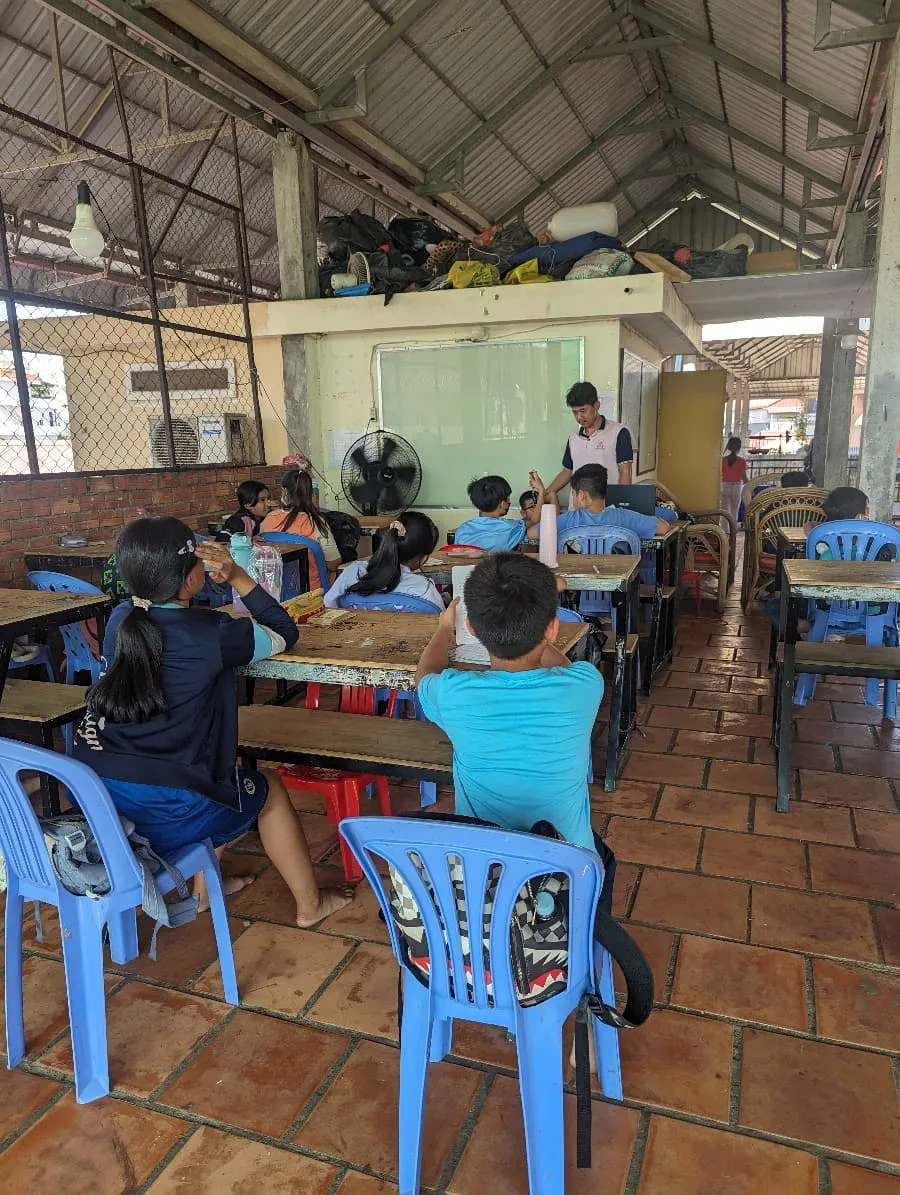Cambodia is a country in Southeast Asia, celebrated for its rich history, incredible temples, natural beauty, and notably, the hospitality of its people. The culture is distinct, blending influences from Khmer, Chinese, and French heritage, creating a landscape of contrasts and memorable experiences.
The predominant religion is Buddhism, embraced by 95% of the population, and the nation is governed as a constitutional monarchy. These aspects significantly shape the educational landscape.
Today, we will explain how it functions, as we at Cooperating Volunteers offer teaching programs aimed at fostering social inclusion for children, youth, and elderly individuals at risk.

WHAT IS EDUCATION LIKE IN CAMBODIA?
Over the past decades, education in Cambodia has seen significant improvements; however, it still faces numerous challenges and remains one of the sectors where inequality is most visible.
Some barriers faced by the younger population include malnutrition, abuse, exploitation, or difficulties accessing school, especially in more isolated rural areas.
Poverty also significantly impacts school dropout rates, as families often cannot afford education and require minors to work at home or in the fields—a stark reality.
The consequences of lacking access to quality education include limited future opportunities for these generations.
Although the enrollment rate of children in primary education is very high (95%), as mentioned earlier, only 35% actually attend. With secondary education, the attendance rate drops further, with less than half of the population reaching this level. For those with options, tertiary education is available, encompassing universities, technical institutes, and various vocational training programs.

Some of the improvements the country has experienced are:
- Increased access: Efforts have been made to increase the coverage of primary and secondary education, resulting in higher enrollment of children in schools.
- Infrastructure improvement: Schools have been built and renovated, providing a more suitable environment for learning and quality spaces.
- Educational reform policies: The government has implemented policies and programs aimed at improving the quality of education and addressing regional and gender disparities.
Investment in teacher training: Significant resources have been allocated to the training and professional development of teachers, aiming to elevate the standard of teaching within classrooms.
It’s crucial for governments to continue investing in these advancements, as education is essential for accessing a future filled with opportunities.




